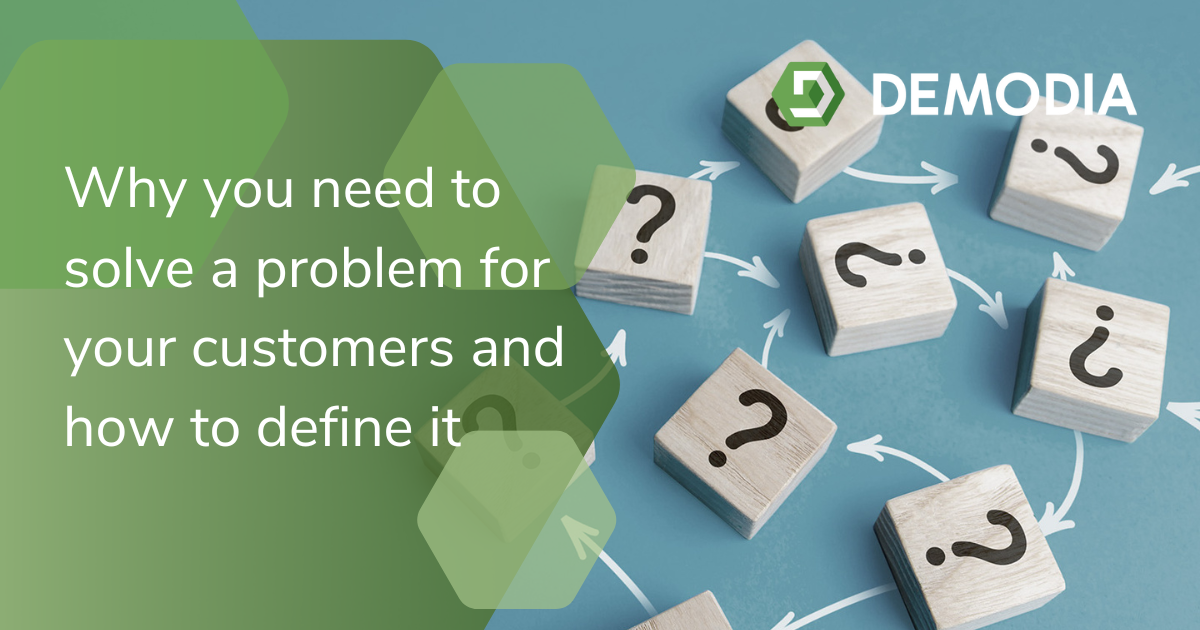3 mistakes most companies make when it comes to storytelling

Storytelling is part of modern content marketing, yet most companies don't use this powerful tool appropriately.
Mistake #1. Companies tell stories without tension
Every hero who sets out on their hero's journey has to overcome a variety of adversities or even problems. As an example, would you want to see the following version of the famous James Bond film Skyfall?
The hitman Patrice hands James Bond the hard drive with all the undercover agents' data. His boss Silva forgives M for the torture he had to endure. At Skyfall, everyone celebrates a feast of reconciliation.
What is missing?
Clearly - the conflict. Or if we want to translate that into storytelling for our marketing purposes - the problem.
Mistake #2: Companies talk about themselves instead of putting the customer at the centre of their story
Here are a couple of examples from the websites of two large Swiss SMEs.
"Global coffee grinding solutions" (Hemro)

and
"2-way construction machines" (Menzi Muck)

If you are not already familiar with the products of these companies, the website gives you no idea what problems the products solve for you. If you want to attract the attention of your customers, you have to put yourself in their world and convey how your product can generate the greatest possible benefit for them.
Why does a focus on the problem bring attention? Because our brain has been programmed by generations of evolution to filter information in order to save energy.
Information that ensures our survival or moves us forward has the right of way in our internal data highway. Other details are quickly forgotten. To get the full attention of your customers, we need to talk about their problems and position ourselves as the guide that will provide them with the optimal solution.
Mistake #3: The problem is not considered on different levels.
Most companies solve an external problem. By that, I mean that if a customer feels they are hungry, they look for a restaurant.
However, in order to create a great story, we need to go further than the obvious. Most problems can be broken down into three levels:
- External problem
- Internal problem
- Philosophical problem
When Liam Neeson's daughter is kidnapped for what feels like the umpteenth time, this is initially an external problem. The daughter is in the wrong hands.
The internal problem is that Liam Neeson did not feel he was a good father. Thus, the internal problem reinforces his motivation to overcome the external difficulty, i.e. freeing his daughter.
Because we know neither Liam Neeson nor his daughter, intimacy in stories is created by the philosophical problem. So good (Neeson) versus evil (the kidnappers).
So, why is it not enough to limit marketing to the external problem?
The reason is that buying decisions are rationalised. For example, you may want a Tesla because it offers the longest range. However, this rational argument is based on a feeling - the internal problem. People want a car that embodies innovation and coolness in order to feel like a pioneer.
Another example might be people who get annoyed by complicated computers (emotion, i.e. an internal problem) choose to buy an Apple computer that combines design with user-friendliness. Incidentally, Apple also solves the philosophical problem right away in its claim: "Think different", because everyone should have the right to find new solutions.
Every good story has a philosophical level. Stars Wars: good vs evil, Hunger Games: freedom vs oppression. Billie Elliot: dreams vs hopelessness. The philosophical problem allows you to address a wider audience.
The following questions will help you to define the various levels of your company's problem:
External: What is standing in the way of your client achieving their goal?
Internal: What does your client feel about their problem?
Philosophical: Why is the problem fundamentally wrong?
How do you find your company's problem?
- Put yourself in your client's shoes. What is their main problem? What is their goal? And why haven't they found a solution yet?
- Define ONE problem. Describe each level of your client's problem in keywords. Short, clear and simple.
- Find 3 practical examples of exactly what the customer's problem looks like and how your solution solves it.
Another tip would be to use vivid language. The better your customer can imagine the solution to their problem, the more likely they will do business with you.
The problem is a key element of successful storytelling for a business, but not the only one. Contact us to learn our proven method for using storytelling to increase your sales.
Become the guide for your customers
To be an organisation that maintains high close-rates without heavy discounting, you need to clearly articulate the value you bring to your customers. To do that, you have to explain your offerings in a way your audience understands and engages with, otherwise, you risk losing leads and money.
Here at Demodia, we know that losing business due to unclear or inconsistent messaging can be easily avoided if you just create the right story for your business - but we also know that this can be difficult. With such a complex product or service that has very specific customers in mind, no wonder it's hard for your prospects to misunderstand the value you bring to the table. This is why, as a StoryBrand certified guide, we've spent the last 12 years crafting value-based stories for small B2B start-ups and mid-sized organisations worldwide.
Here’s how we do it:
1. Book a consultation - during this online introduction we will review your current messaging approach and future business goals.
2. Build your story - we will give you a step-by-step approach to improve your brand story. Then we can do this for you or you can do it yourself.
3. Grow your business - watch your conversion-rates and profits increase as customers uncover your true values.
Contact us today, and let us guide you to accomplishing more for your organisation through effective messaging.

